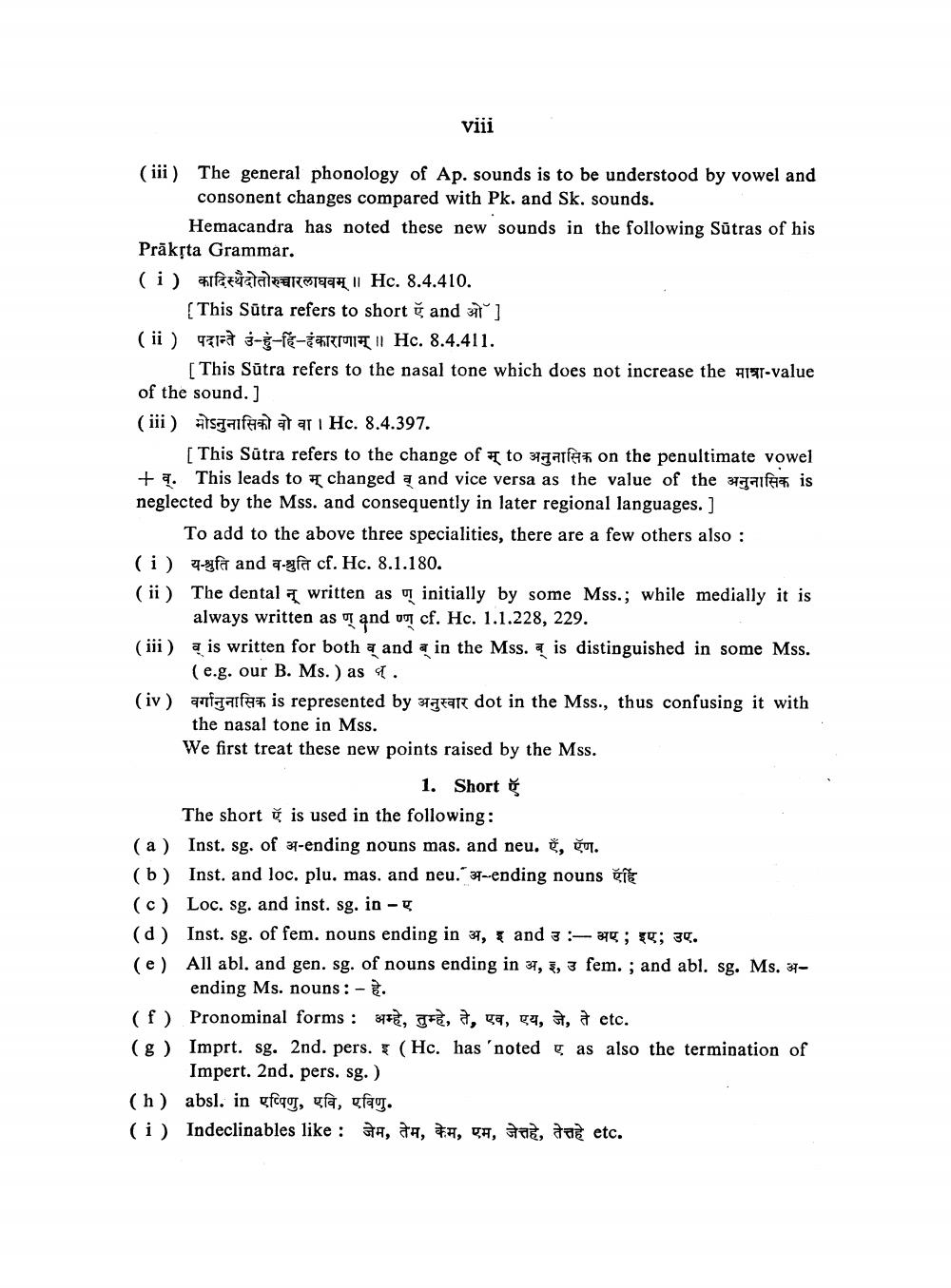________________
viii
(iii) The general phonology of Ap. sounds is to be understood by vowel and
consonent changes compared with Pk. and Sk. sounds.
Hemacandra has noted these new sounds in the following Sūtras of his Prāksta Grammar. (i) alagaa R$1994 || Hc. 8.4.410.
(This Sütra refers to short š and it'] ( ii ) 27 -g-fe- RMIT Hc. 8.4.411.
[This Sūtra refers to the nasal tone which does not increase the Aust-value of the sound. ) (iii) alsgafant at ari Hc. 8.4.397.
[This Sūtra refers to the change of to gatan on the penultimate vowel + 4. This leads to changed a and vice versa as the value of the water is neglected by the Mss. and consequently in later regional languages. ]
To add to the above three specialities, there are a few others also : (i) 7-8fa and agfa cf. Hc. 8.1.180. (ii) The dental written as q initially by some Mss.; while medially it is
always written as I and on cf. Hc. 1.1.228, 229. (iii) a is written for both a and a in the Mss. is distinguished in some Mss.
(e.g. our B. Ms.) as . (iv) anfaarfar is represented by gear dot in the Mss., thus confusing it with
the nasal tone in Mss. We first treat these new points raised by the Mss.
1. Short ğ The short t is used in the following: (a) Inst. sg. of 34-ending nouns mas. and neu. ¢, tu. (b) Inst. and loc. plu, mas, and neu. 34-ending nouns it (c) Loc. sg. and inst. sg. in - (d) Inst. sg. of fem. nouns ending in 37, 3 and 3 :- 390; ; 39. (e) All abl. and gen. sg. of nouns ending in 37, 1, 3 fem.; and abl. sg. Ms. 3
ending Ms. nouns: - (f) Pronominal forms : 372, JF, a, a, v4, 5, etc.
Imprt. sg. 2nd. pers. (Hc. has 'noted g as also the termination of
Impert. 2nd. pers. sg.) (h) absl. in gfqg, fa, gfag. (i) Indeclinables like : , NA, H, TA, , an etc.




